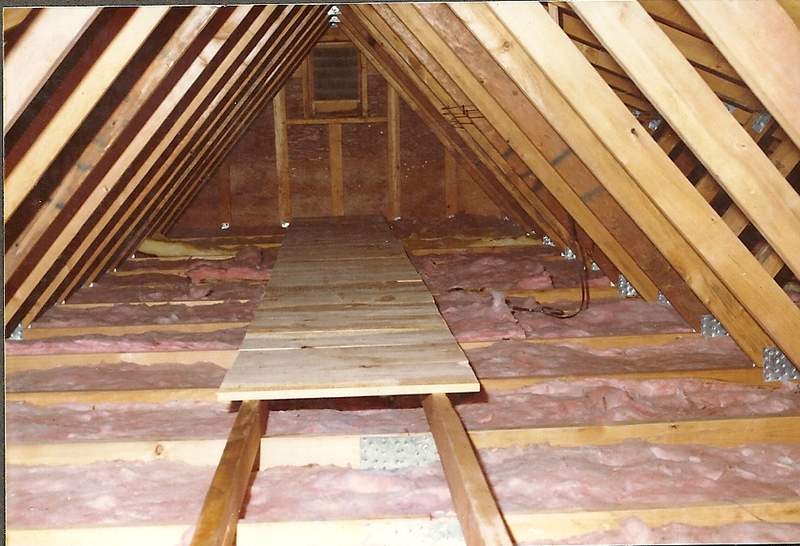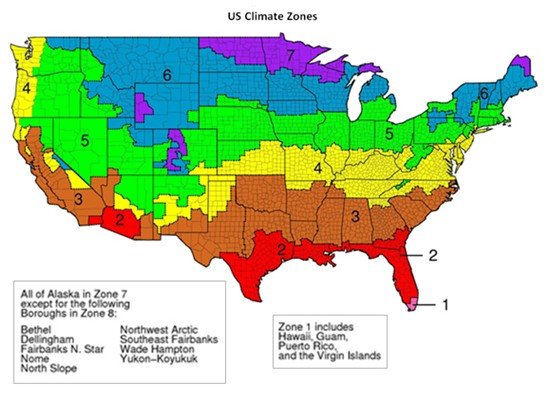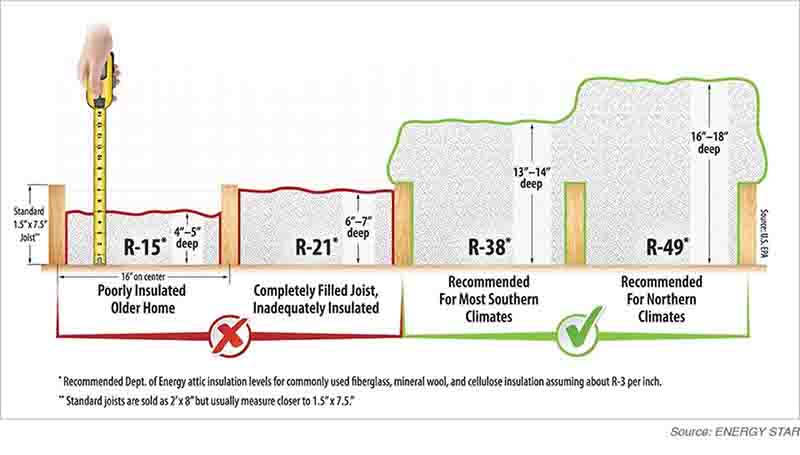Do I Need More Attic Insulation?

Attic insulation is one way to lower your energy bills and make your home more green.
Most homeowners never add more attic insulation even though most new home builders install the absolute minimum amount of attic insulation required by code. Over time, blown-in insulation tends to settle naturally, and attics often miss 20%-50% of the insulation necessary to meet the R-value recommended by the U.S. Department of Energy.
Once insulation settles or is matted down, its insulating ability is reduced, and the R-value is diminished. Through a visual inspection, if the floor joists in your attic are visible, you probably need more insulation. Floor joists are the boards spread every 16″ to 24″ across the attic floor, about eight inches high. These boards should be covered entirely in excess by insulation. See the illustration at the bottom of this page for further explanation.
Adding new attic insulation will restore or exceed the R-Value the U.S. Department of Energy recommends, which will save you money on energy costs and help limit your need for AC Repair in Plano, Richardson, Allen, and surrounding Dallas, Texas communities.
How often should you put more insulation in your attic?
Several factors influence the frequency of adding insulation to your attic. Generally, it’s advisable to reassess your attic insulation every 10-15 years. Over time, insulation can settle or degrade, reducing its effectiveness.
However, the need for insulation maintenance also depends on climate. In regions with extreme temperatures, such as very hot or cold climates, regular inspections are essential. Additionally, energy efficiency goals, local building codes, and the age of your home play a role. During major renovations or roof replacements, it’s an opportune time to enhance insulation. Ultimately, the ideal timing for adding more insulation varies based on individual circumstances.
Will adding attic insulation save me money?
Yes. With a well-insulated attic, you will be amazed at how much you will save on heating and air conditioning costs. The money you save from your heating or air conditioning bills will pay for your insulation in just a few years.
Adequately insulated attics and ceilings will pay for themselves in just four years. The Department of Energy estimates that a properly insulated attic can shave 10 to 50 percent off your heating and cooling bill.
How Much Insulation Do I Need In My Attic In Texas?
 Knowing if you need to add insulation to your attic begins with an inspection of the thickness of your attic insulation. Although a thorough examination of your attic insulation is necessary to assess your current insulation thickness, a quick peek can let you know the current level of your attic insulation.
Knowing if you need to add insulation to your attic begins with an inspection of the thickness of your attic insulation. Although a thorough examination of your attic insulation is necessary to assess your current insulation thickness, a quick peek can let you know the current level of your attic insulation.
If you can see the wood beams (joists) through the insulation, you probably don’t have the recommended R-value for your attic and are wasting money on energy costs.
Attic insulation tends to settle over time, so it no longer provides the insulating resistance necessary for your area. If your home is over eight years old, chances are your insulating power is less than it once was, so you are probably paying more to heat and cool your home than necessary.

Schedule Service
How insulation works
In the most simplistic terms, insulation is designed to stop the movement of heat, whether from your attic into your home during the summer or heat from inside your home to the outside in the winter. In more scientific terms, understanding how insulation works requires understanding three basic principles: conduction, convection, and radiation.
SAVE Money with our current Extreme AC Specials
To simplify our explanation, it helps to understand that heat flows from warmer to cooler areas until there is no longer a temperature difference. In the summer, the heat will flow from your attic or outside into your home through ceilings, walls, and floors. The opposite is true in the winter months; heat will flow from the warm areas of your home into attics, garages, and outside.
Therefore, insulation provides resistance to heat flow, keeping your home cool in the hot summer months and keeping your home warm in the cold winter months.
What is the R-value?
An insulating material’s resistance to conductive heat flow is measured in terms of its thermal resistance or R-value. The higher the R-value, the greater the insulating power.
However, the R-value depends on the type, the thickness of attic insulation, and the density of attic insulation used. Increasing your insulation thickness will increase the R-value and the resistance to heat flow in your home.
How Much Insulation Do I Need In My Attic In Texas?
As you can imagine, how much insulation in the attic is necessary and the recommended R-value for a homeowner is based on geographic location. 
As you can see from this chart, the United States is broken down into seven different climate zones.
Our area of North Texas falls in climate zone three, where attics are recommended to have an R-value between 38-49.
With blown-in fiberglass insulation, this means a minimum of 12 inches of attic insulation and up to 20 inches of fiberglass insulation. Increasing the R-value of your attic insulation will help limit the need for a new air conditioning installation in Plano, McKinney, Frisco, and surrounding communities.





